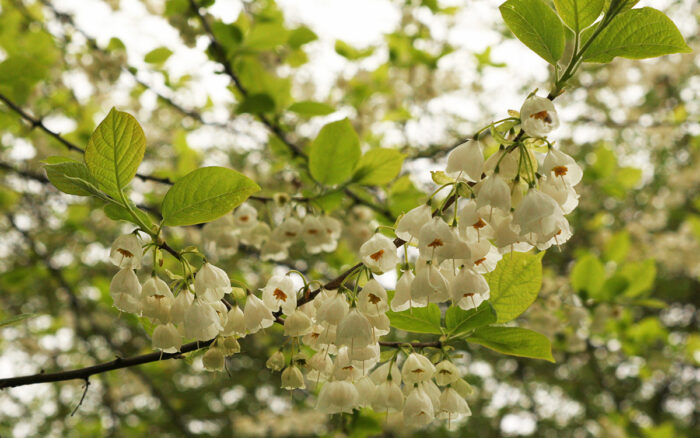
We all need to add more native plants to our landscapes. Choosing a native tree not only helps the birds and the pollinators in our area, but it can mean less maintenance for you. Native plants are adapted to live here. They tolerate our weather—dry or wet—odd winters, insects, and diseases better than some introduced species. It’s an easy choice to make.
There are a lot of choices. Narrowing it down can be the hard part. Here are four beautiful spring-flowering trees for our region.

Fringe tree
Chionanthus virginicus, Zones 4–9
Fringe tree grows 12 to 15 feet tall and just as wide, with multiple trunks, resembling a crape myrtle (Lagerstroemia spp. and cvs., Zones 6–9) in shape. It blooms in early spring with white, fringelike flowers before the leaves appear. It’s often fragrant, and the flowers are abundant. In the fall, the large oval leaves turn a lovely yellow.
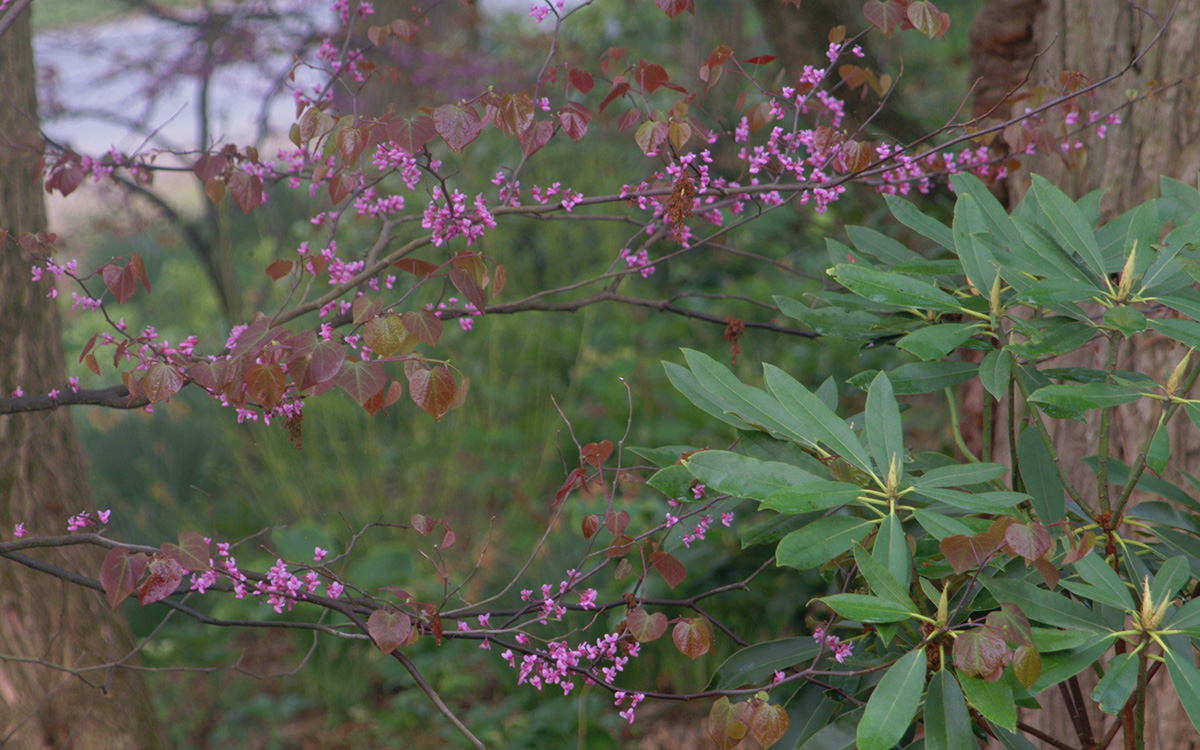
Eastern redbud
Cercis canadensis and cvs., Zones 4–9
Eastern redbud has a habit similar to a cherry, often single trunked and round at the top. It grows 20 to 30 feet tall and about just as wide. It also flowers early in the spring and before the foliage appears. The branches are covered with tons of tiny purple flowers. After the flowers, the new growth is a burgundy-red that matures to green with yellow fall color. There are now a lot of cultivars of Eastern redbud, which make them even more interesting in the landscape. ‘Forest Pansy’, ‘Ruby Falls’, ‘Rising Sun’, and ‘Hearts of Gold’ are all intriguing cultivars.
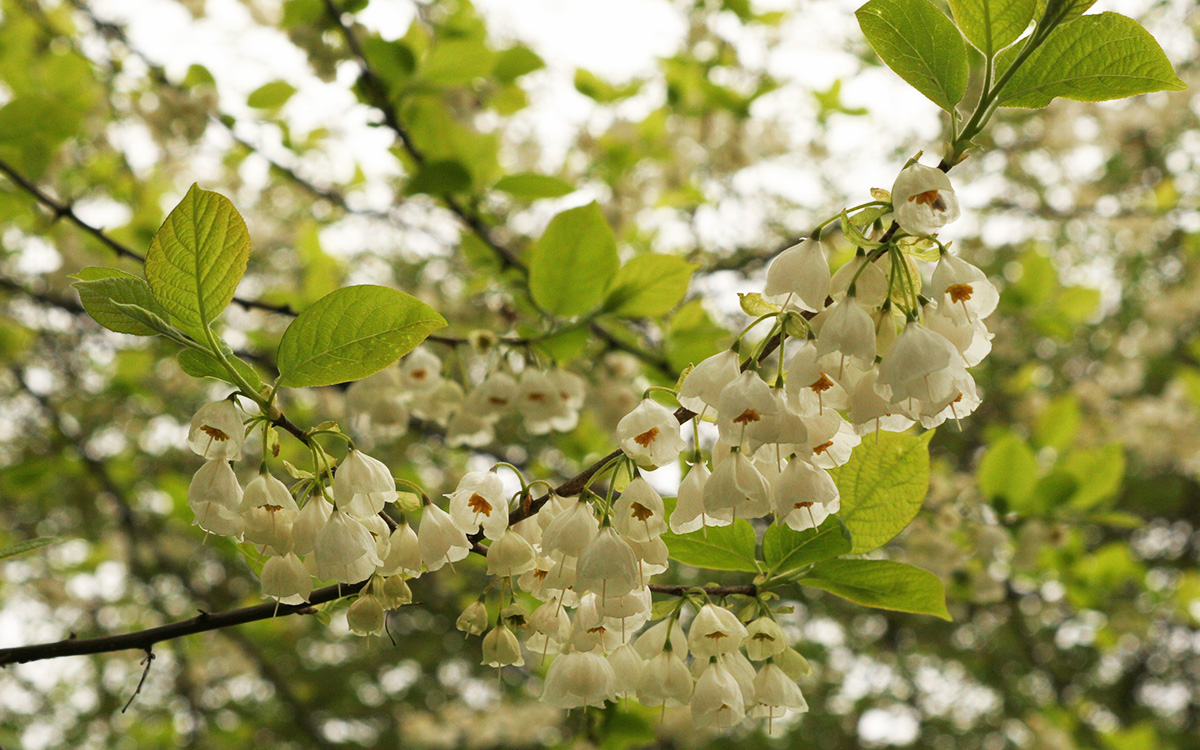
Carolina silverbell
Halesia carolina, Zones 4–8
Carolina silverbell is also generally shaped like a cherry, with a single trunk and a round head. It can grow 30 to 40 feet tall and 20 to 35 feet wide. The white, bell-shaped flowers appear in early spring and are quite showy. After the flowers, interesting seedpods decorate the trees all summer. The leaves in fall are yellow with some occasional orange mixed in.
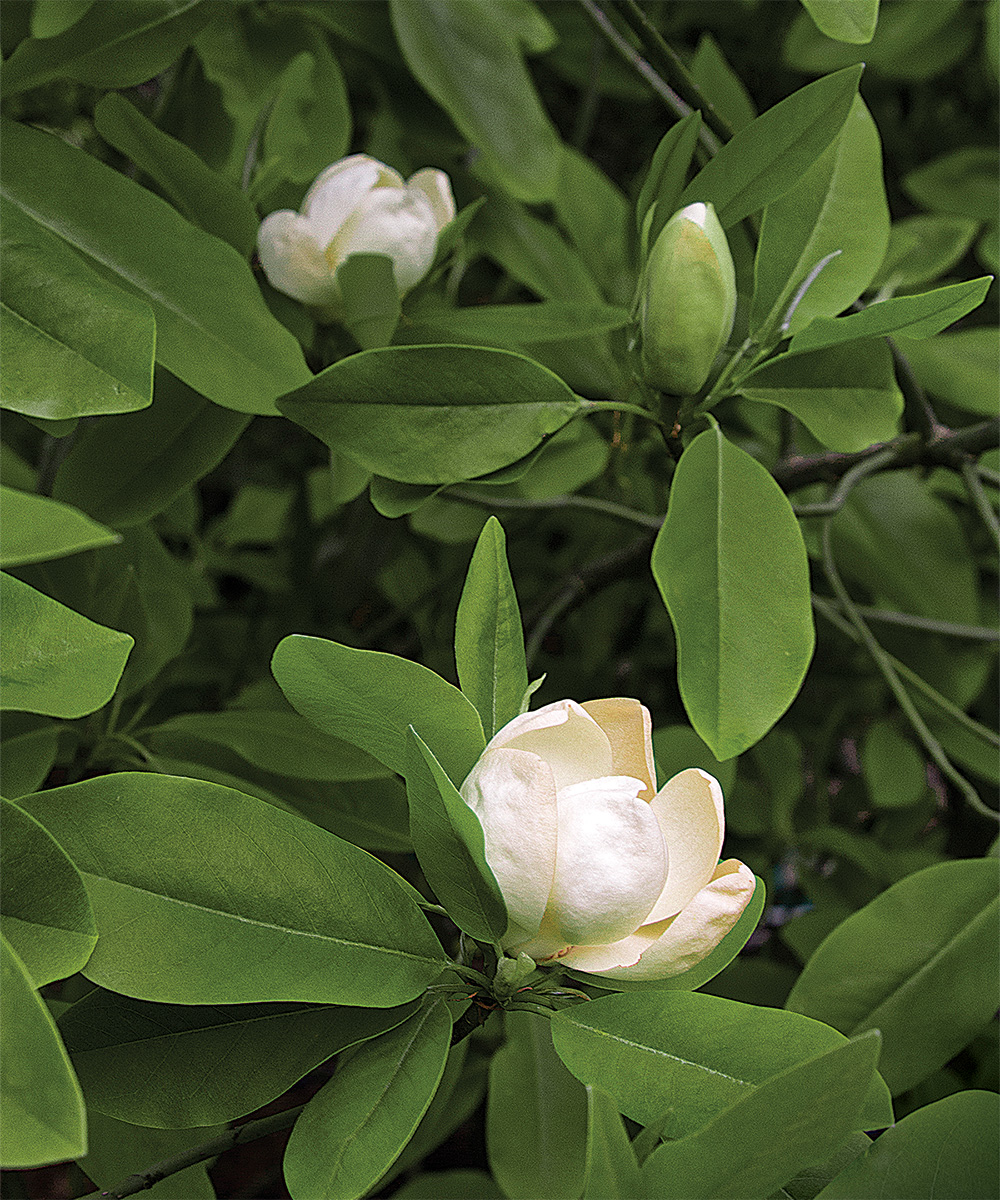
Sweet bay magnolia
Magnolia virginiana and cvs., Zones 5–10
This is one of our favorite trees. In the Deep South it can grow 40 to 60 feet tall and about 30 feet wide. An evergreen tree with multiple trunks, it looks attractive year-round. The bark is smooth and gray-brown in color. The leaves are green on one side and have silver-brown backs that appear whenever a breeze moves through the canopy. The flowers are white and smell wonderful. The pods are showy when the bright red seeds appear. This white-flowering tree is a much better alternative to the invasive ‘Bradford’ pear (Pyrus calleryana ‘Bradford’, Zones 5–9).
It seems impossible to replace an entire landscape with natives, but it’s just like eating an elephant: one bit at a time will get you there. A small flowering tree such as a cherry (Prunus spp. and cvs., Zones 2–9), crape myrtle, or pear (Pyrus spp. and cvs., Zones 4–9) can be replaced with any one of the above native spring-flowering trees.
—Jason and Shelley Powell own and manage Petals from the Past, a garden center in Jemison, Alabama.
Fine Gardening Recommended Products

DeWalt Variable-Speed Cordless Reciprocating Saw
Fine Gardening receives a commission for items purchased through links on this site, including Amazon Associates and other affiliate advertising programs.
- 18.31 x 6.13 x 4 inches
- 1-1/8-inch stroke length
- Variable speed trigger with 0-3000 spm

Lee Valley Mini Garden Shear Set
Fine Gardening receives a commission for items purchased through links on this site, including Amazon Associates and other affiliate advertising programs.

Lee Valley Garden Knife
Fine Gardening receives a commission for items purchased through links on this site, including Amazon Associates and other affiliate advertising programs.




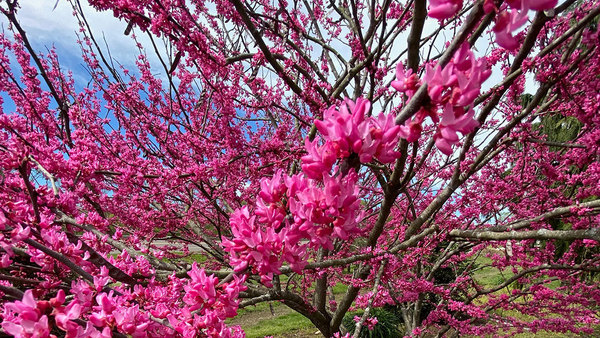













Comments
Log in or create an account to post a comment.
Sign up Log in